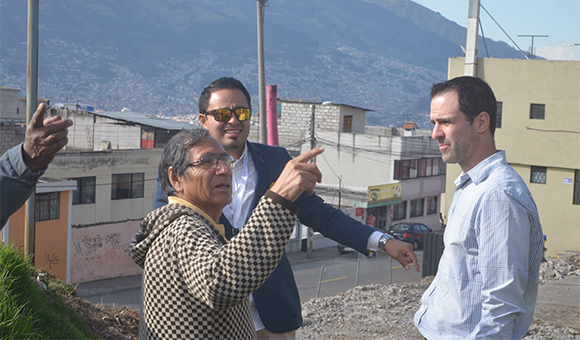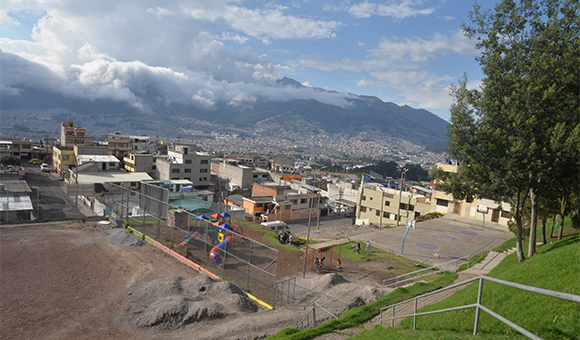Yale School of Management United States
The streets of downtown Quito clog with traffic for hours at a time, with many residents opting for buses that are filled to the brim.

The city is planning an innovative new project called the “Quito Cables,” a series of gondolas designed to help alleviate traffic issues across the city’s east to west corridor, connecting residents to a centralized area from throughout the valley where the city is located. The idea is largely based on a similar successful effort in Colombia. Global Network students assigned to the project are looking for solutions to not only bring economic development around the potential sites, but to also determine what challenges the project may face.
One of their immediate goals is to develop a plan to increase public awareness of the project and its potential benefits, and to create a management plan that government officials can use to connect with the public.
“The general sentiment is that [residents] are against the Cables, but it’s largely because they don’t know much about what the project is about,” said Alex Sanchez, MBA ’16, EGADE Business School. “It seems that part of the issue is that the government hasn’t communicated enough about it.”
Sanchez said that part of the solution might be to create a better marketing strategy for the city and open up a greater dialogue. The area where the first site is planned is considered an unplanned settlement—a neighborhood that developed without the municipality’s planning—but those residents need to be onboard with the government’s plan, Sanchez said.
Nearly 67% of the city’s residents rely on the public transportation system, according to city officials, and the traffic not only leads to excessive pollution but also slows economic activity. Buses in the area atop a mountainside are dangerous, an official told students during a tour of the first planned stop atop one of the mountainside communities, since they speed quickly down steep hillside roads and sometimes crash.
Residents told Edwin Garcia, Yale FES ’17, that they opposed the project because they felt promises have been unfulfilled. One of the most contentious points involves the loss to the project of a soccer field, which local business owners said was a key source of entertainment for residents in the area and also brought more business to shops.

Those local problems matter, even if a transportation plan might increase the quality of life for residents, Garcia said. Creating a plan to help the city reach out to the residents in the short term may create a longer-term solution.
“People have just general knowledge about the project,” Garcia said. “Some think it may be popular at first, but they’re concerned that the demand will drop. It’s important for us to know how many people are using the transportation system so we can make a concrete plan.”
